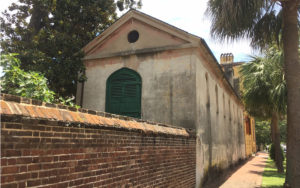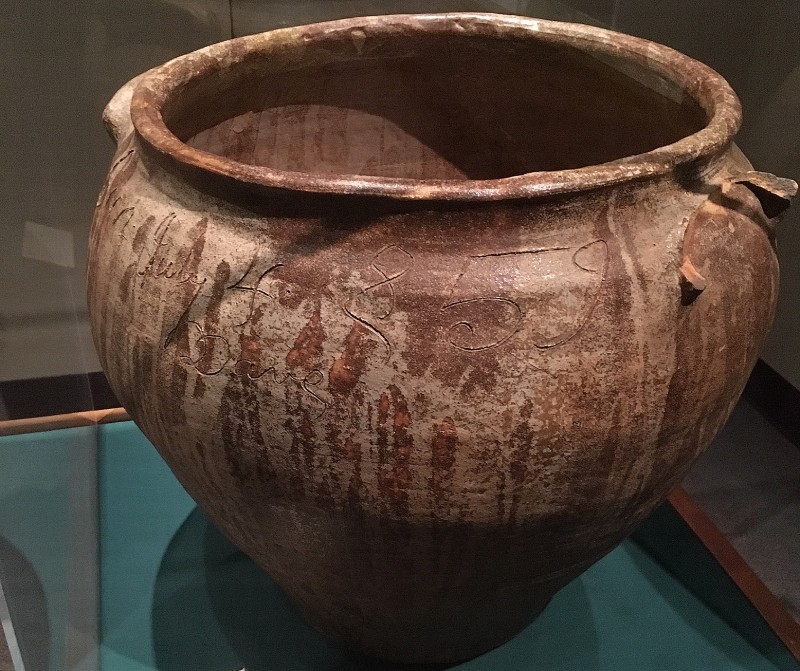Here’s a big old pot sitting in a museum somewhere in the South. First, what is this pot and why might it be important? Second — for a bonus — where is this pot today? Send your guess to editor@charlestoncurrents.com. And don’t forget to include your name and the town in which you live.
Our previous Mystery Photo
 Our July 1 mystery, “Different view of Charleston site, offered a view of outbuildings form the Aiken-Rhett House along Elizabeth Street in Charleston.
Our July 1 mystery, “Different view of Charleston site, offered a view of outbuildings form the Aiken-Rhett House along Elizabeth Street in Charleston.
Congratulations to several readers who send in the correct answer: Chris Brooks of Mount Pleasant; Stephen Yetman and David Savard of Charleston; Deborah Getter of Johns Island; George Graf of Palmyra, Va.; and Marnie Huger of Richmond, Va.
By coincidence, on the same morning that we snapped the photo, The New York Times published this article that outlined how some historic sites, such as the Aiken-Rhett House, now includes the perspectives of how enslaved people lived in these houses.
Graf provided more interesting context, according to TheTruthinHistoryInitiative.wordpress.com:
“William Aiken Jr. was an incredible businessman and politician in his own right and he was eventually elected as the Governor of our great state. He too was an antebellum rice and cotton Planter who personally owned upwards of 700 fellow human beings. This number made him one of the largest individual slaveholders our nation has ever had.
“The perception that those who were enslaved were only labor is an utter myth that has been perpetuated by the Planters themselves and those that have descended from them. The fact is those who were enslaved were not only the workforce they were the brains. It is they who had the knowhow and technology behind Charleston’s three most important cash crops, rice, Indigo and cotton. Without their collective intellectual input the successful cultivation of those three commodities would never have occurred on the scale they did.
“The proof of that here is once these African Americans were ‘emancipated’ and largely removed from the free labor equation both our cotton and our rice industry failed. Those that have descended from the Planter Aristocracy offer up numerous other excuses as to why these industries failed including General Sherman scorched earth policy, federal corruption, hurricanes, the boll weevil, among many others.”
Send us a mystery: If you have a photo that you believe will stump readers, send it along (but make sure to tell us what it is because it may stump us too!) Send it along to editor@charlestoncurrents.com.




 We Can Do Better, South Carolina!
We Can Do Better, South Carolina!
























